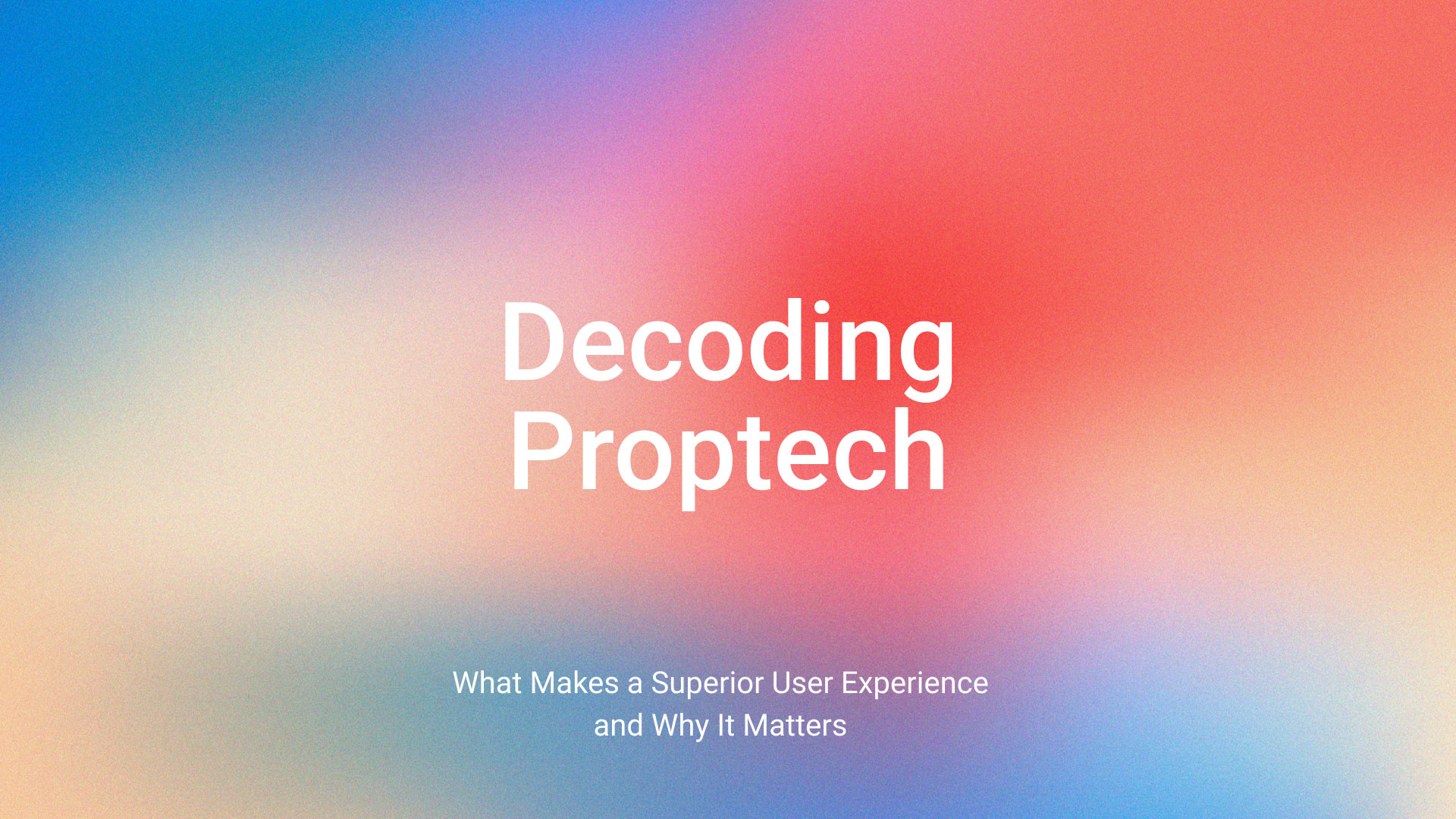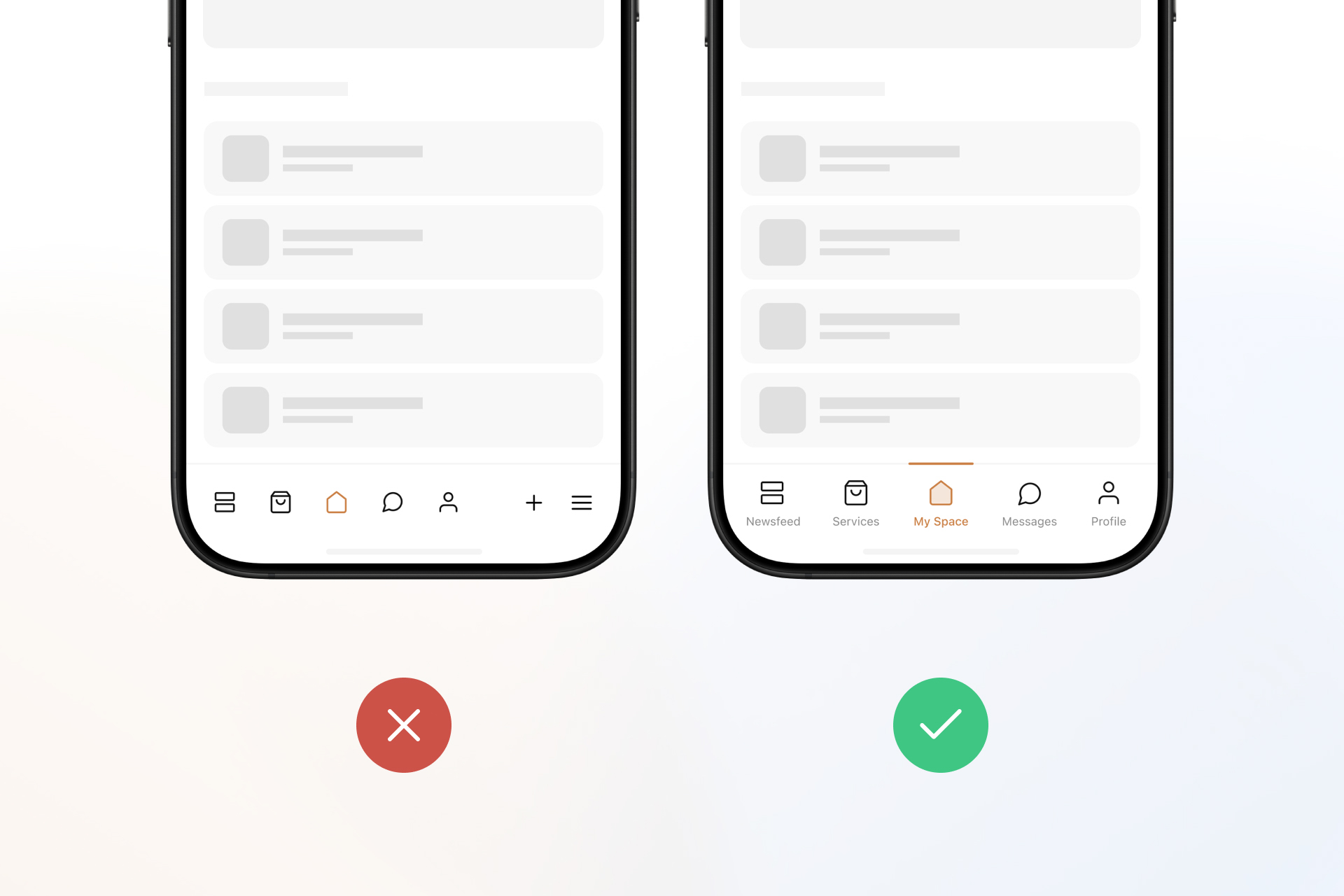
Our in-house experts take you on a deep dive into the most important aspect of any tenant app: the user experience.

Several years ago, a tenant app was a nice-to-have for certain sectors of real estate, but hardly a necessary benefit to offer tenants. Now? It’s a key factor in branding, tenant experience, retention, and competitive differentiation.
The more important it has become to offer tenants an app, the more tenant experience apps have flooded the market. So the question you have to ask during your search for the right solution for your tenants is–Which tenant app is the best?
To help you answer that question, in this article our in-house experts will take you on a deep dive into the most important aspect of any tenant app: the user experience.
First let’s define the two most important terms to aid your hunt for the right tenant app for your properties: user experience (UX), and user interface (UI). For that we turn to Sandra Muñoz, Spaceflow’s Product Manager:
“UX is all about the person using the app. How do they feel? Does the app feel easy for them to use and keep using repeatedly? Are they able to achieve their goal each time they use the app?
UI, or the user interface, is what they’re looking at and interacting with. It’s the buttons, the layout, the colors, the icons, the typography of the app. It’s what they use to achieve their goal.”
The two terms are closely related in that the quality of the user interface has a huge impact on the user experience. “If the app’s UI is clunky, messy, poorly designed, and unpredictable, then the user has a bad experience when trying to navigate to the end of their task,” adds Patrick Beznoska, Graphic Designer for Spaceflow.

Is the resident app a good place to cut corners and save on costs by choosing the cheapest option, regardless of how poor the user experience might be? Let’s look closer at why UX matters, and how it affects the value of your property long term.
"Tenant and user experience has become an increasingly important factor. Their demands, particularly concerning how technology is integrated into the experience of living and working in our buildings, are challenging us to raise the bar with our offering to them."
Jérôme Schaefer | Allianz Real Estate Asset Manager for Region North & Central Europe
Increased Engagement: Tenants will use a well-designed and navigable app more often because it’s fast and easy to get what they want from it, compared to a poorly-designed counterpart. The more they use the app, the more they will use revenue-generating features like booking amenities, meeting rooms, services, and shared spaces.

Improved Tenant Satisfaction: A good tenant app is a delight to use, giving users seamless and instant access to amenities, communication, information, and community. Not only will they feel connected to the spaces around them, they’ll feel more engaged with their fellow tenants, all of which leads to higher tenant satisfaction and higher retention over time.
“A well-designed tenant app delivers an outstanding user experience regardless of the type of building the user occupies. Coworking, coliving, build-to-rent, multi-tenant offices–a good UX has the same positive impact on them all.”
David Balik | Head of Product, Spaceflow
Boosted Property Value: We’ve established that the user experience of the tenant app you choose will have a direct impact on how much tenants use the amenities, shared spaces, and services that your property offers.
As Abby Covert, author of How To Make Sense of Any Mess put it: “The impact of UX is crystal clear: the more satisfied your users are, the more likely they are to do whatever it is you are encouraging.” This in turn impacts the value of the property and its return on investment.
“We can see this happening for our own clients, where those in the top five with the most engaged users are also in the top five for most hours booked through the Spaceflow app,” says Muñoz.
“The branded LIV Residential app adds significant value to our branding, becoming the go-to place for everyone to manage their lives in the building.”
Milco Jonkhout | Asset Management Associate, Orange Capital Partners
Efficient Property Management: A surprising but significant effect of good user experience in a tenant app is a reduction in operational time and costs in several areas. Tenants have access to bookings, maintenance requests, and digital documents, reducing the workload for operational teams through automation and self-service options.

“No matter how many features a tenant app offers–whether it’s streamlined communication, transparent ticketing, or amenity booking and payments–if the app is hard to navigate, overly complex, or offers a poorly designed interface, tenant engagement and satisfaction will be negatively affected,” adds Balik.
You’re offering this great benefit to tenants living or working in your buildings, make sure they will actually use it by choosing the app that creates the best user experience. You’ll see increased engagement, higher satisfaction and retention, boosted ROI, and operational savings.
Now we’ll examine the elements that go into an excellent user experience, which are a combination of well-executed UI design, product features, and software engineering.
Navigation: how easy is it for the user to get what they want?
Navigating the app via user interface should be intuitive and simple, with no learning curve necessary. This requires clearly structured and consistent menus, recognizable icons, call-to-action buttons that are visible and contain straightforward copy, and minimal steps in each task pathway.

Put together, these design elements make it easy for users to get what they want from the app with no friction and no frustration, whether it’s submitting a maintenance request or signing up for an event.
“Today’s expectation towards smart buildings is to marry simplicity with complexity. Building users need a centralized point of information with easy navigation, to get quickly to whatever they need at the moment,” said Renata Hartle, CEO & Co-Founder of WasteTracker. “At the same time buildings are becoming more advanced year to year and there is so much to be taken care of! From access, through booking, facilities management to ESG data. The truth is, that we are navigating a more complex, flexible environment than just 5 years ago and as much as digitalization is the path - the balance of keeping it simple is the challenge to tackle.”
Visual design: how will your brand be remembered?
There is a long list of elements and best practices for the visual design of the user interface that contribute to a superior user experience. Together, they should form a visually appealing, memorable layout that adds to the intuitive navigation mentioned above.
“We keep our Spaceflow app design simple, clear, and consistent for several reasons. It’s easier for users to navigate, it inspires positive emotions, its predictability reduces friction, it’s timeless, and it aligns well with and supports every variation of client branding,” explains Beznoska.

The design should be consistent throughout the various screens and app features, including for integrations such as mobile access. Users will know what to expect thanks to that predictability, for an even smoother experience.
“This area is often neglected because it can be complicated on the backend when building integrations with other solutions, but we consider it essential to maintain the same user-friendly experience and consistent branding in the app. That’s why we design our own user interface for third-party integrations instead of just linking to them, which also adds extra steps to the user journey,” says Balik.
Emotions play a role too. The design should be executed in a way that facilitates the right emotions for users. Those emotions will also be directly associated with your brand, so you need the right tenant app that creates positivity and memorability.
Accessibility: does it support diverse user needs?
For the best user experience, the user interface should address accessibility guidelines and the context in which the app is being used. This can be done in many ways, for example by using the right level of contrast for colors, which is crucial for readability and user sensitivity.
Personalization: can the user customize their experience?
A user-centric tenant app should offer customization options such as viewing content based on personal preferences, setting up relevant notifications, and saving favorite services, events, or even doors to unlock with mobile access. This personalization reduces friction and frustration by getting rid of the extra “noise” in the interface.
Customization fosters a sense of control, relevance, and connection with the brand. Long term, satisfaction goes up and churn goes down as tenants enjoy efficient and convenient access to all the benefits of their app, on their terms.
Performance: how well does the app perform technically?
Finally, the technical implementation. A tenant app could tick all the boxes above and still have a poor user experience if the performance of the app is bad. In practice, good performance means fast loading, minimal bugs, reliability, and smooth integration with other building technology such as smart metering and mobile access.
The app must work equally well for both iOS and Android. When something does break, the app providers should have seamless error handling set up with clear communication on the status for users to reduce frustration and set expectations.
Data-driven: is user input collected and implemented?
Every user experience design should be backed up by data and feedback collected from the users to fully meet their needs and expectations. This involves automated satisfaction surveys sent out in-app, testing for new features, and an in-depth understanding of user behavior.

The tenant app provider that you choose should have extensive experience working with and understanding tenant behavior. They should ensure the app is a thoughtfully-designed gateway connecting tenants to your buildings and branding.
As you’ve seen, the user experience of a tenant app plays a critical role in the overall tenant experience within your buildings, whether they are coliving, PBSA, or commercial. Schneider Electric’s Hiram Barber summed it up: “Investing in the digital customer experience of your customers…is an investment into your long-term business strategy – critical to customer satisfaction, loyalty and market differentiation.”
Now that you’ve learned the key elements of user experience, you can make better choices about which tenant app is best for your property.
When evaluating tenant apps, don't just focus on what they do; consider how they do it. Ask yourself: Is the app easy to navigate? Is the design visually appealing? Does it feel intuitive and user-centric? Can it support my brand?
If you want to see how that looks in practice, get in touch with us via hello@spaceflow.io